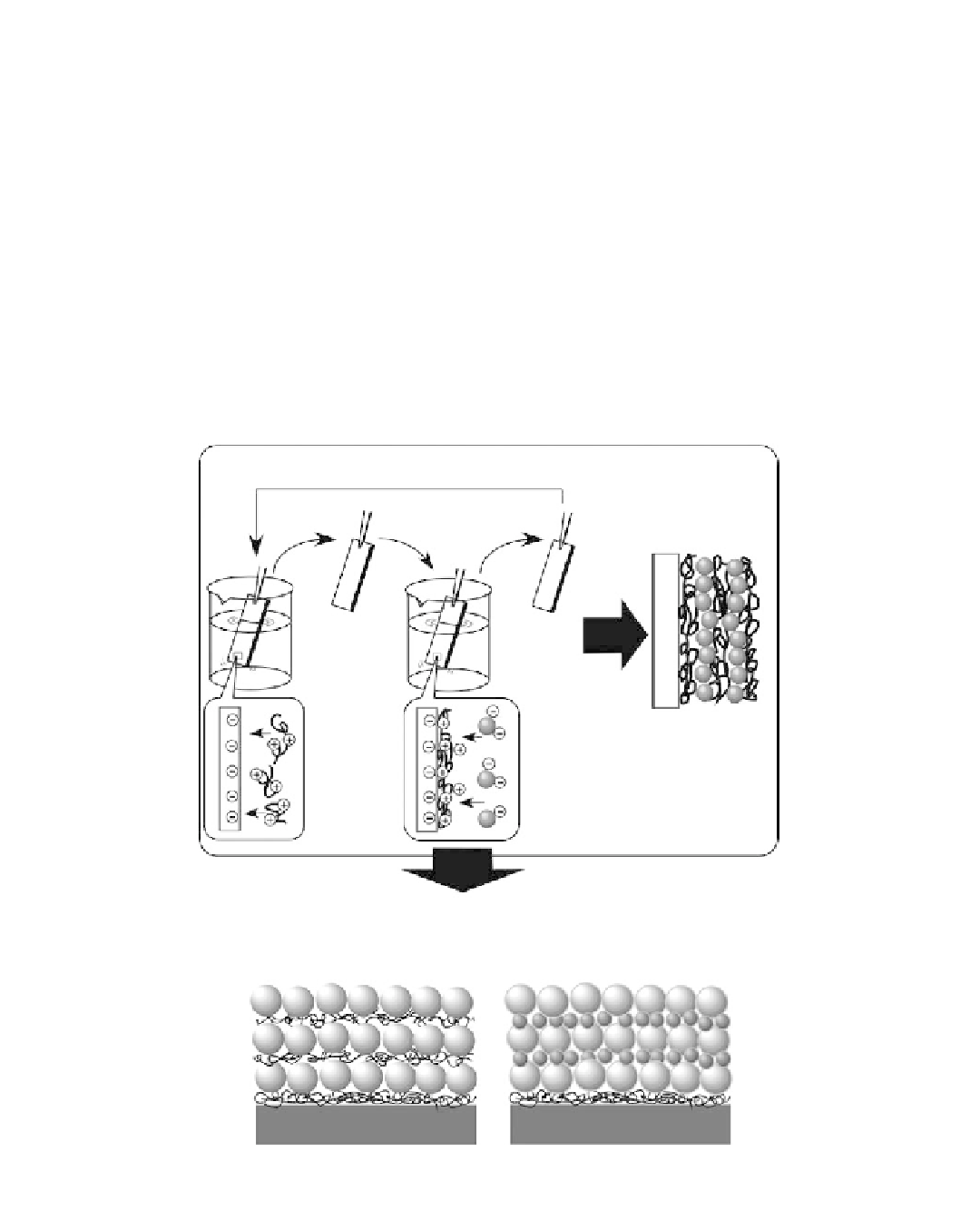Biomedical Engineering Reference
In-Depth Information
The image shown in Figure 12.5C is attractive, but the structure was still formed in an unin-
tentional way. For formation of the hybrid structures in controlled modes, the designed assembly
of Cerasomes was performed by alternate layer-by-layer (LbL) adsorption. The LbL technique has
recently attracted much attention as a novel method of preparing molecular fi lms, and a wide range
of materials is applicable in this method [16 -34]. As illustrated in Figure 12.6A, this method is basi-
cally conducted through electrostatic interaction, although several modifi ed methods based on the
other interactions have also been proposed. A solid support with a charged surface is fi rst immersed
in a solution containing oppositely charged polyelectrolyte. The adsorbed polyelectrolytes neutralize
surface charges, and over-adsorption causes effective reversal of the surface charge. The solid sup-
port-bearing reversed charges can be used for adsorption of countercharged particles, fi nally result-
ing in surface charge reversal again. Repeating these processes leads to multilayer formation of
nanoparticles, where the number of layers and layering sequences can be desirably controlled. For
preparation of Cerasome assemblies, Cerasome was alternately assembled with poly(diallyldimet-
hylammonium chloride) or PDDA (Figure 12.6B(a)), confi rmed by regular frequency changes of
the quartz crystal microbalance (QCM) substrate [35]. An atomic force microscopic (AFM) image
of the Cerasome-PDDA fi lm assembled on a mica plate revealed that the Cerasome particles were
(A) Alternate layer-by-layer-assembly
(B) Assembled films
(a) Cerasome
−
polyelectrolyte
(b) Cerasome
−
cerasome
assembly
assembly
FIGURE 12.6
(A) Outline of layer-by-layer (LbL) assembly. (B) LbL fi lms with Cerasome: (a) Cerasome-
polyelectrolyte assembly and (b) Cerasome-cerasome assembly.

